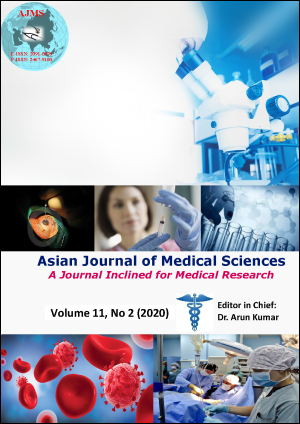Macroscopic and microscopic effects of elevated temperatures on unrestored and restored teeth: An in-vitro forensic study
Keywords:
Dental identification, Forensic sciences, TemperaturesAbstract
Background: The present “in vitro” study was done to observe the effects of high temperatures on teeth restored with different restorative materials and unrestored teeth.
Aim and Objective: This study aims to investigate the nature of damage to unrestored and restored teeth subjected to high temperatures. The main objective of the study is to assess whether it could serve as an aid in identification of human dental remains in forensic odontology for cases of incineration by means of comparison between ante-mortem and post-mortem records.
Materials and Methods: The present study was conducted on 125 extracted premolar teeth which were later on divided into five groups (25 premolar teeth each) as control group, group of teeth restored with class I amalgam restorations, group of teeth restored with class I composite/adhesive system restorations, group of teeth restored with glass ionomer restoration and group of teeth restored with metal ceramic crown restored teeth. The restored teeth were placed in a furnace and heated at a rate of 10°C/min. The effects of the predetermined 200°C, 400°C, 600°C, 800°C, 1000°C and 1200°C temperatures were examined macroscopically and then microscopically by means of a stereomicroscope. Data obtained in the present study was subjected to the statistical analysis using SPSS 18 software for one-way ANOVA andindependent t-test (paired).
Result: The class I restorations made of amalgam could be identified till 1200°C because they maintain their shape despite the disintegration of the crowns along with PFM restoration with disintegration of remaining restorations along with tooth. Systematic approach toward the preservation of charred dentition, as at times could prove to be the best evidence for identification of those who are extensively burned.
Conclusion: Pre-planned and systematic approach toward the preservation of charred dentition is important as at times it could act as a potential evidence for the identification of those who are severely burnt.
Downloads
Downloads
Published
How to Cite
Issue
Section
License
Authors who publish with this journal agree to the following terms:
- The journal holds copyright and publishes the work under a Creative Commons CC-BY-NC license that permits use, distribution and reprduction in any medium, provided the original work is properly cited and is not used for commercial purposes. The journal should be recognised as the original publisher of this work.
- Authors are able to enter into separate, additional contractual arrangements for the non-exclusive distribution of the journal's published version of the work (e.g., post it to an institutional repository or publish it in a book), with an acknowledgement of its initial publication in this journal.
- Authors are permitted and encouraged to post their work online (e.g., in institutional repositories or on their website) prior to and during the submission process, as it can lead to productive exchanges, as well as earlier and greater citation of published work (See The Effect of Open Access).




